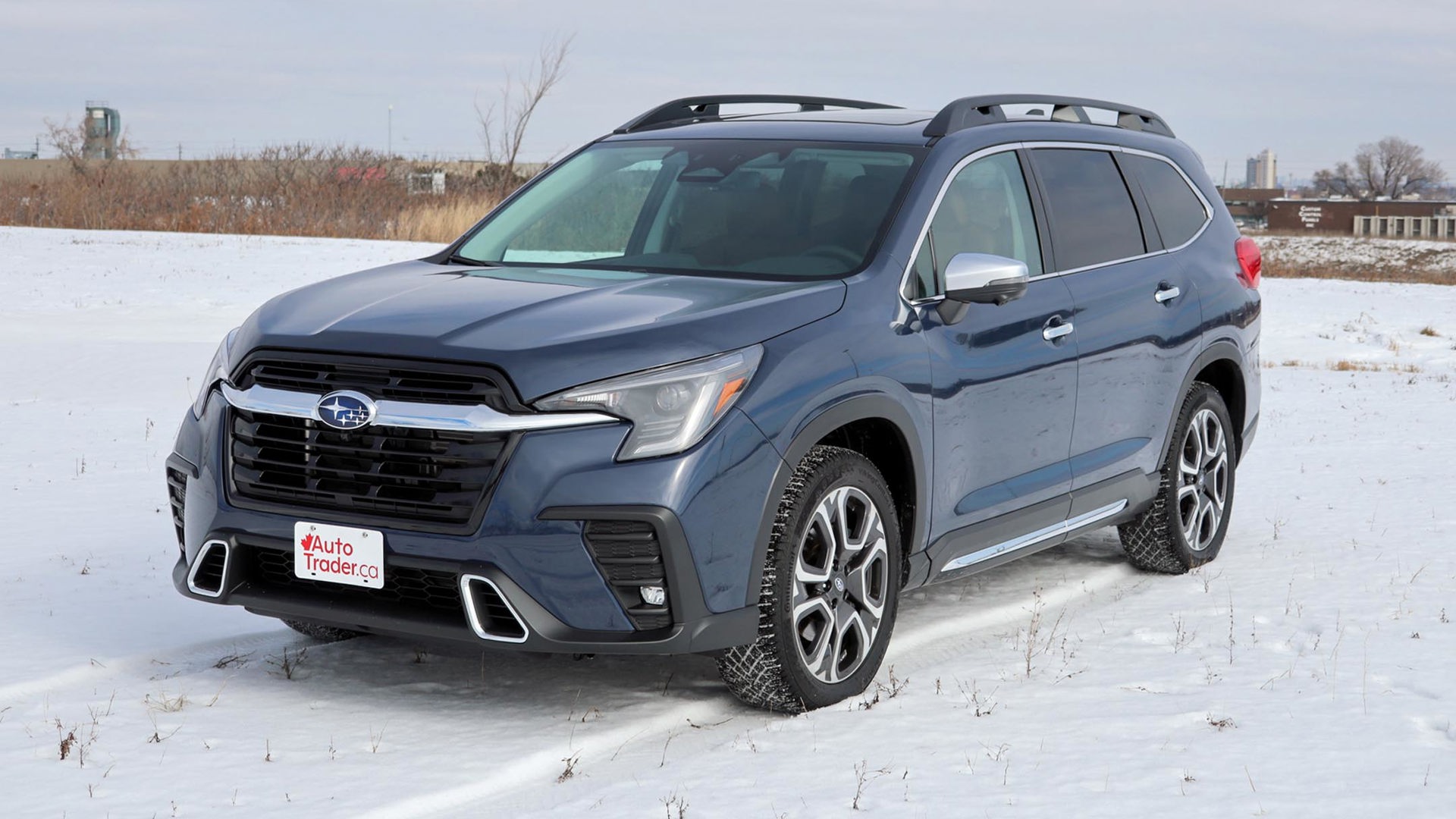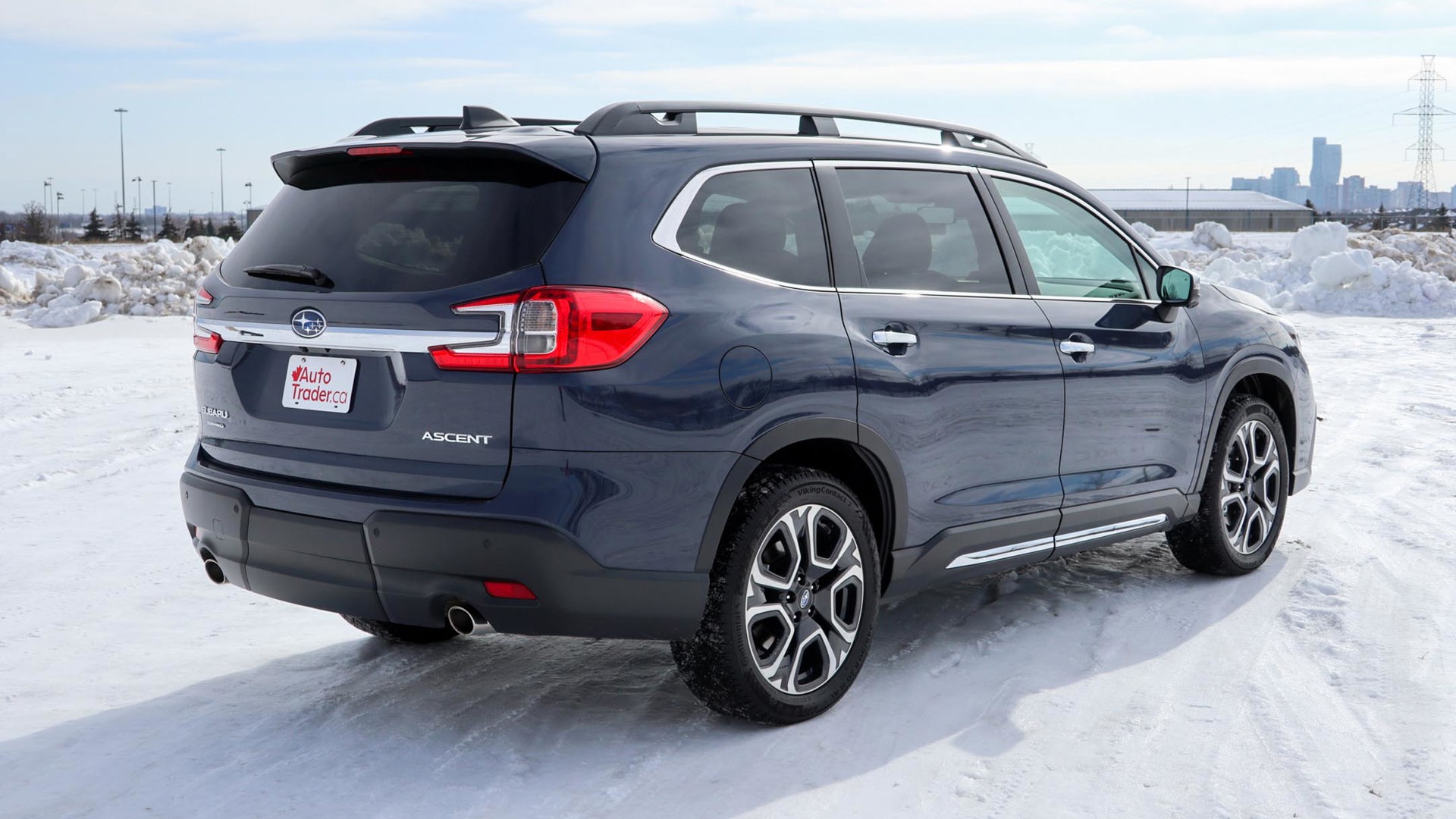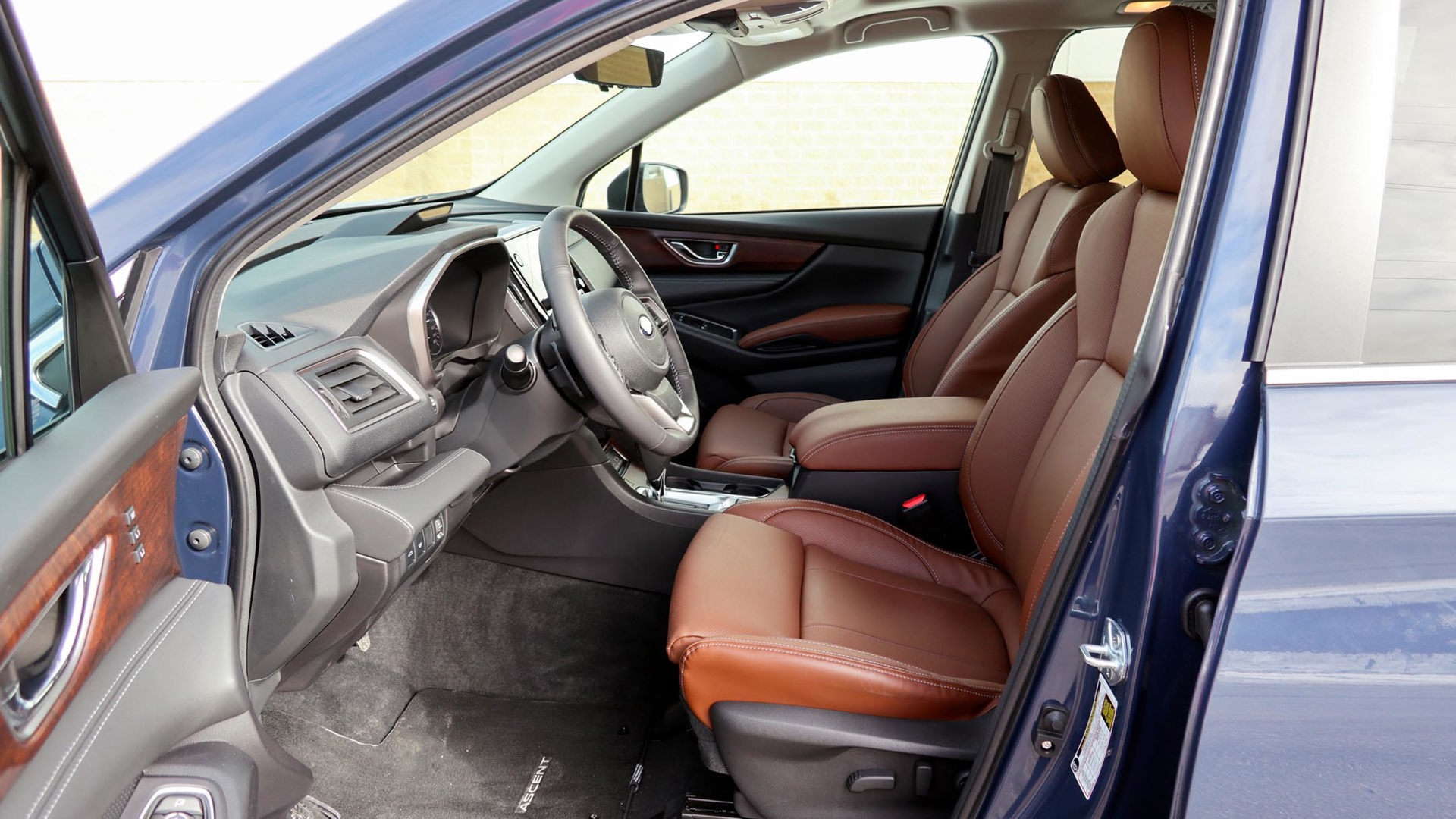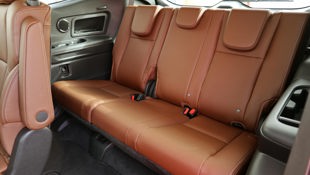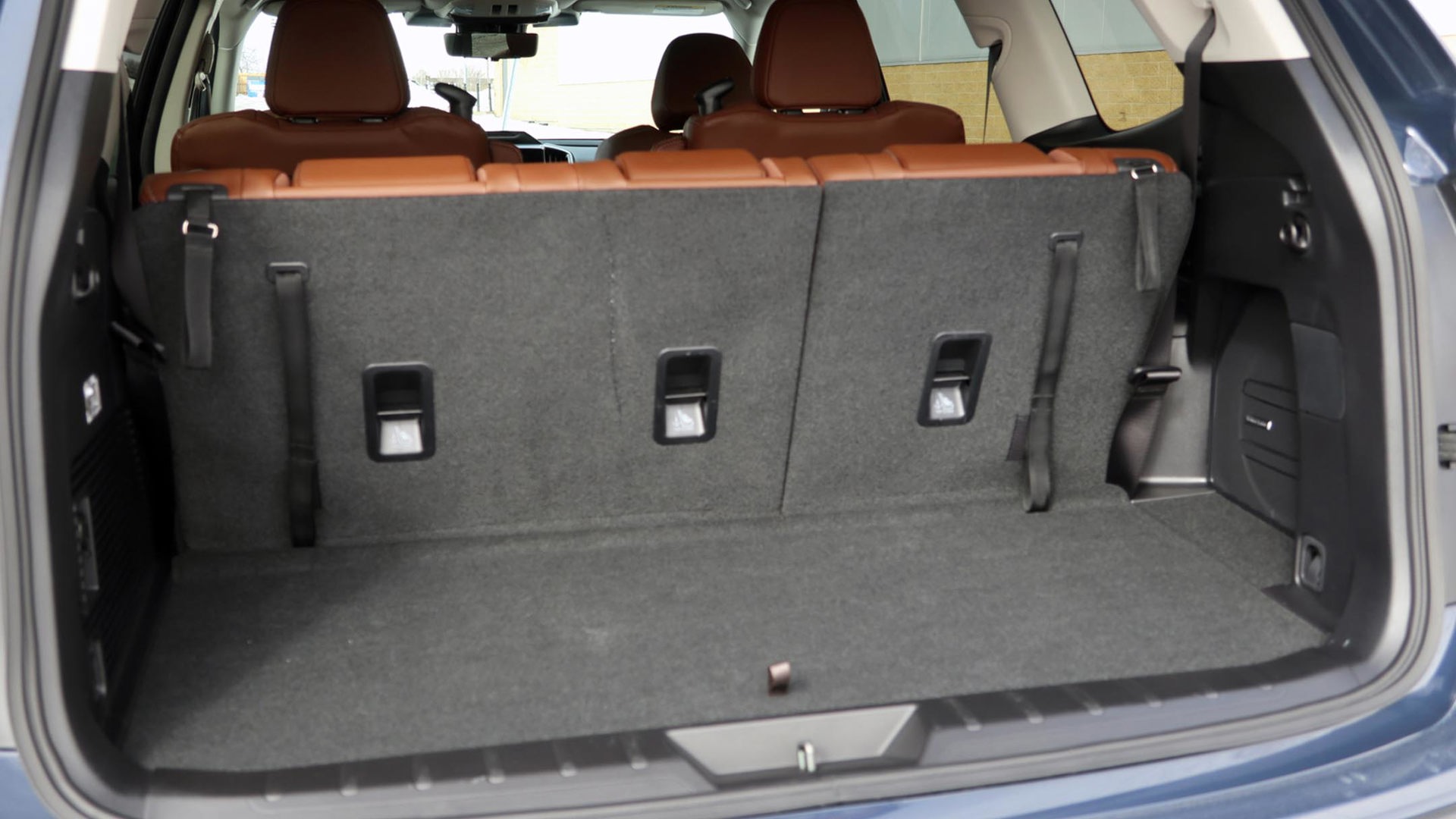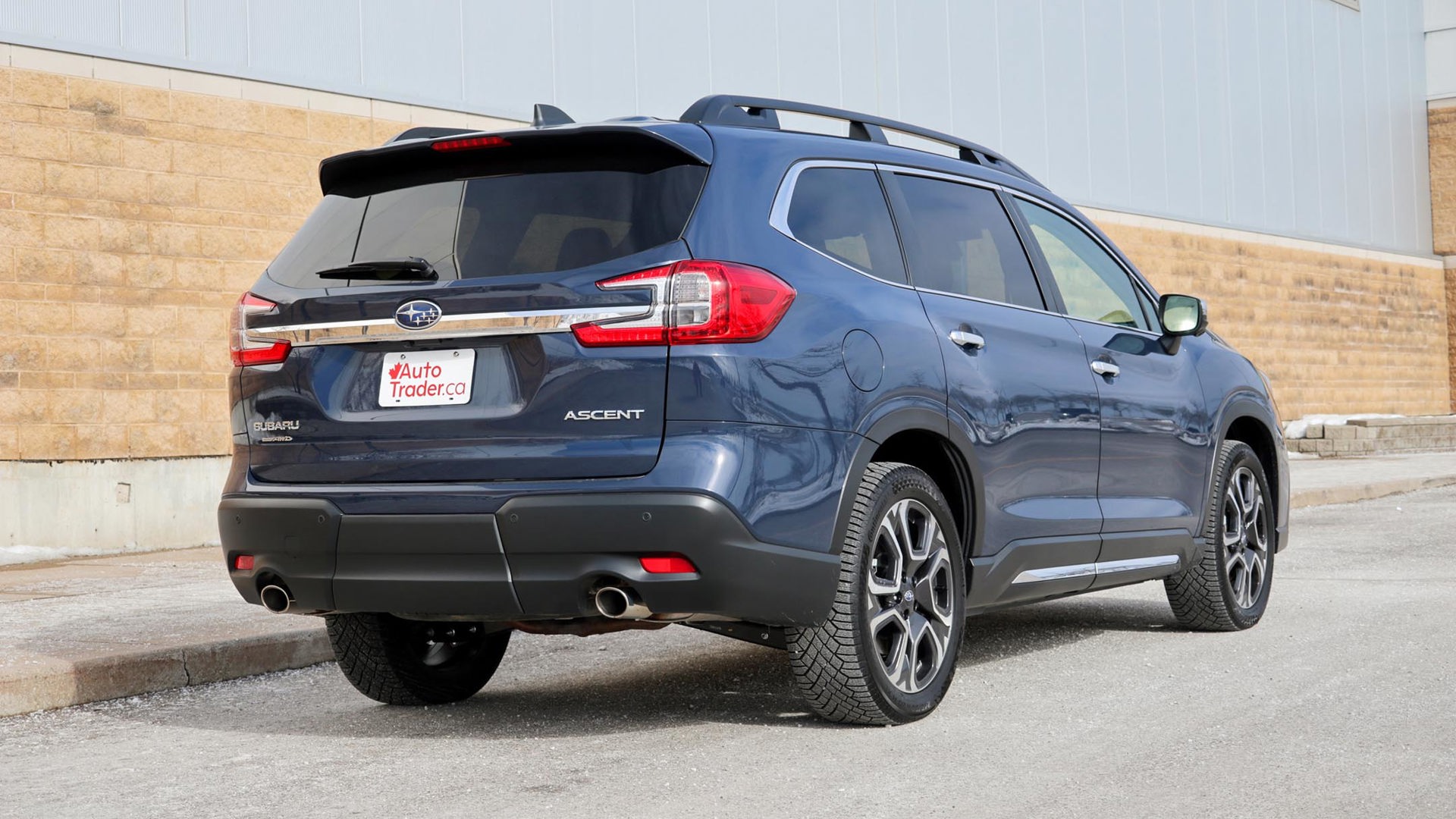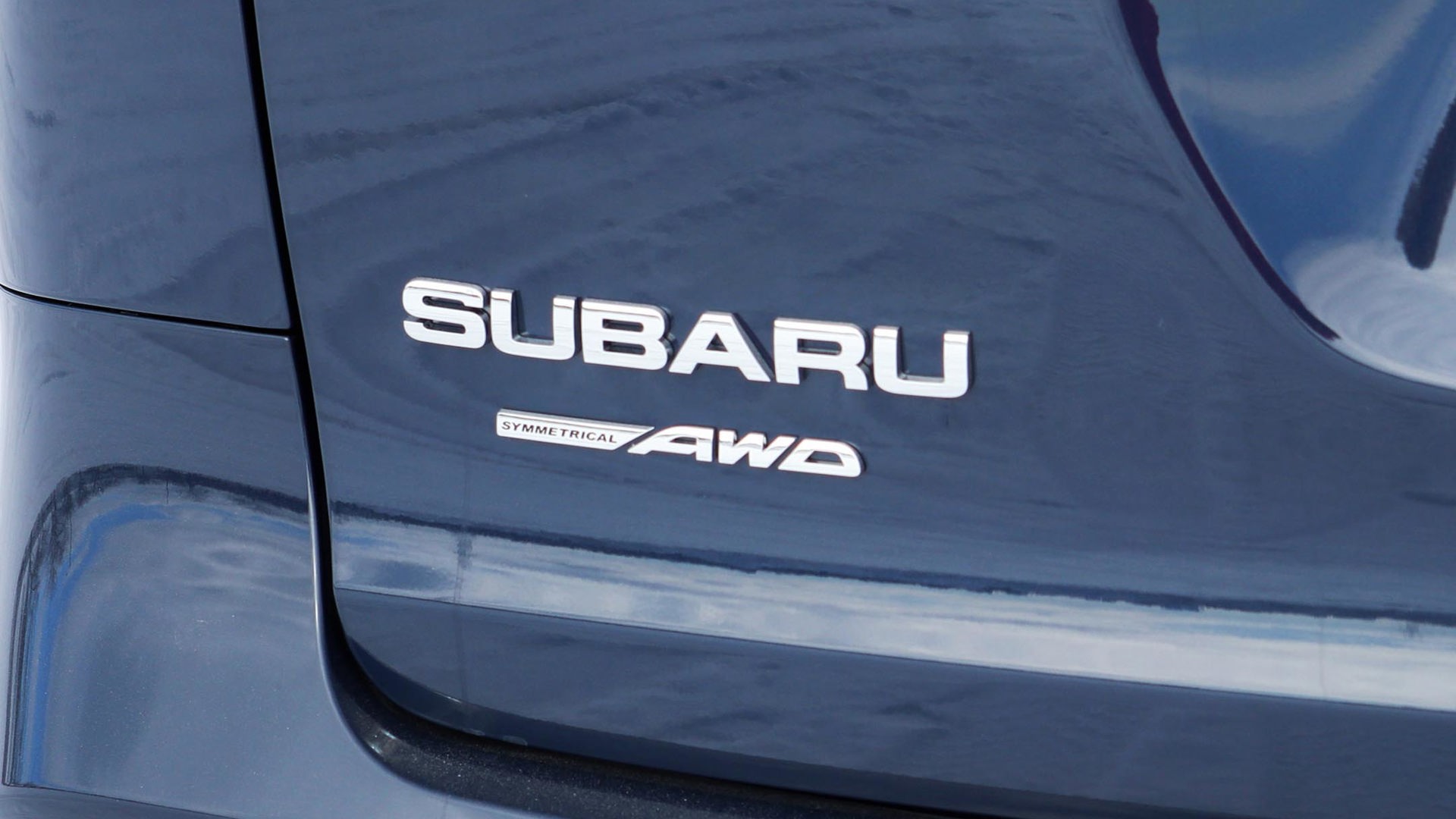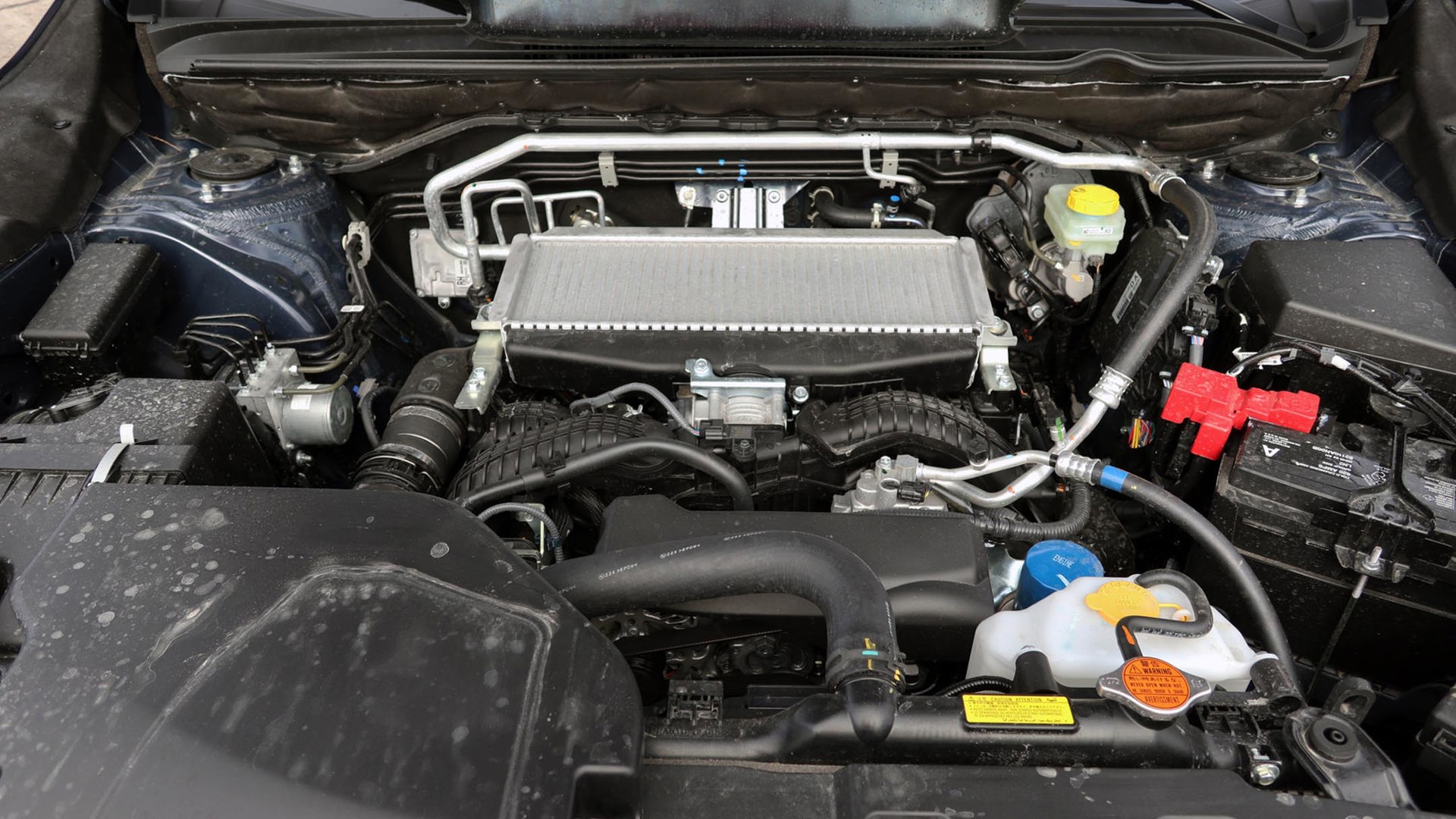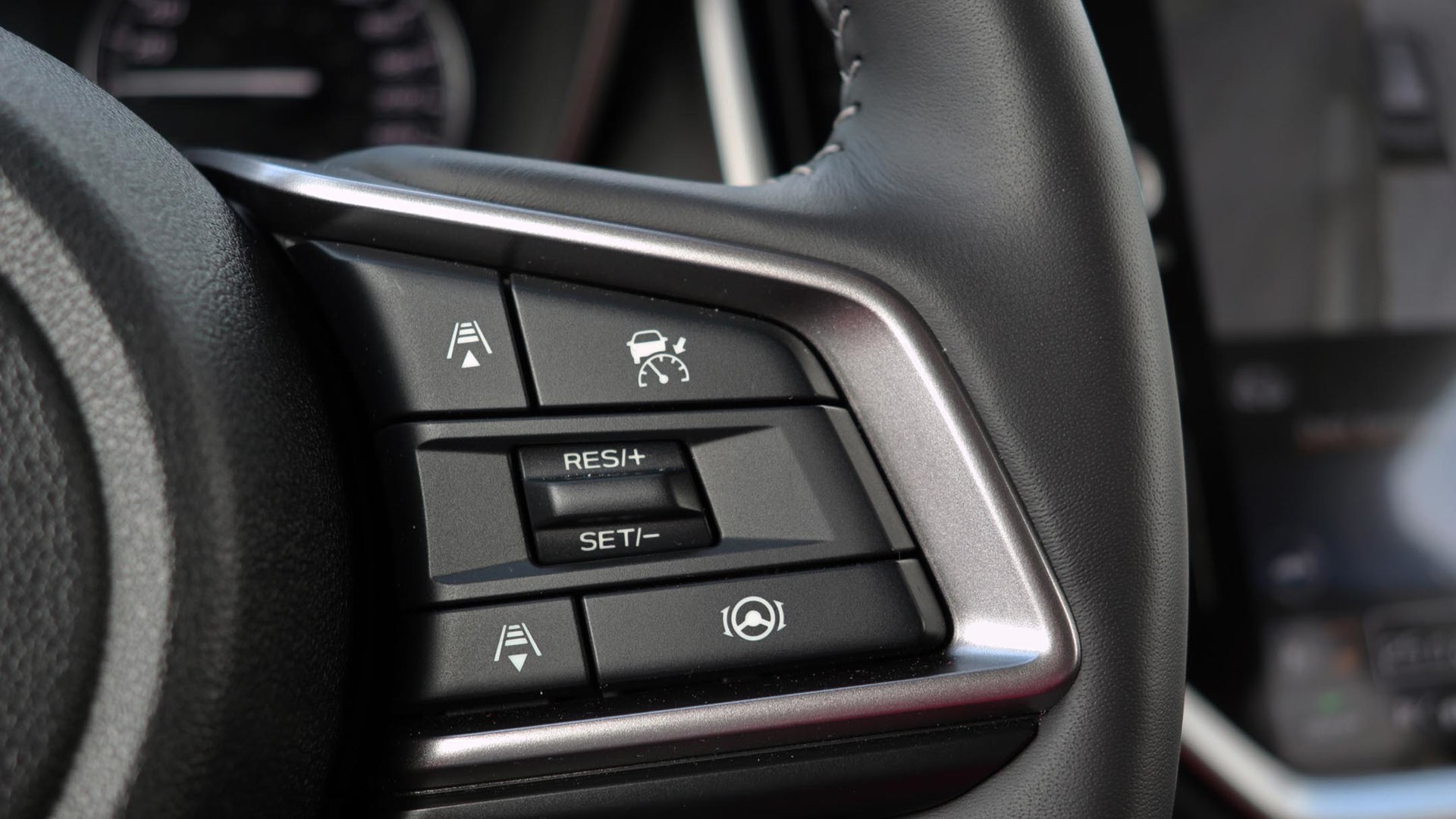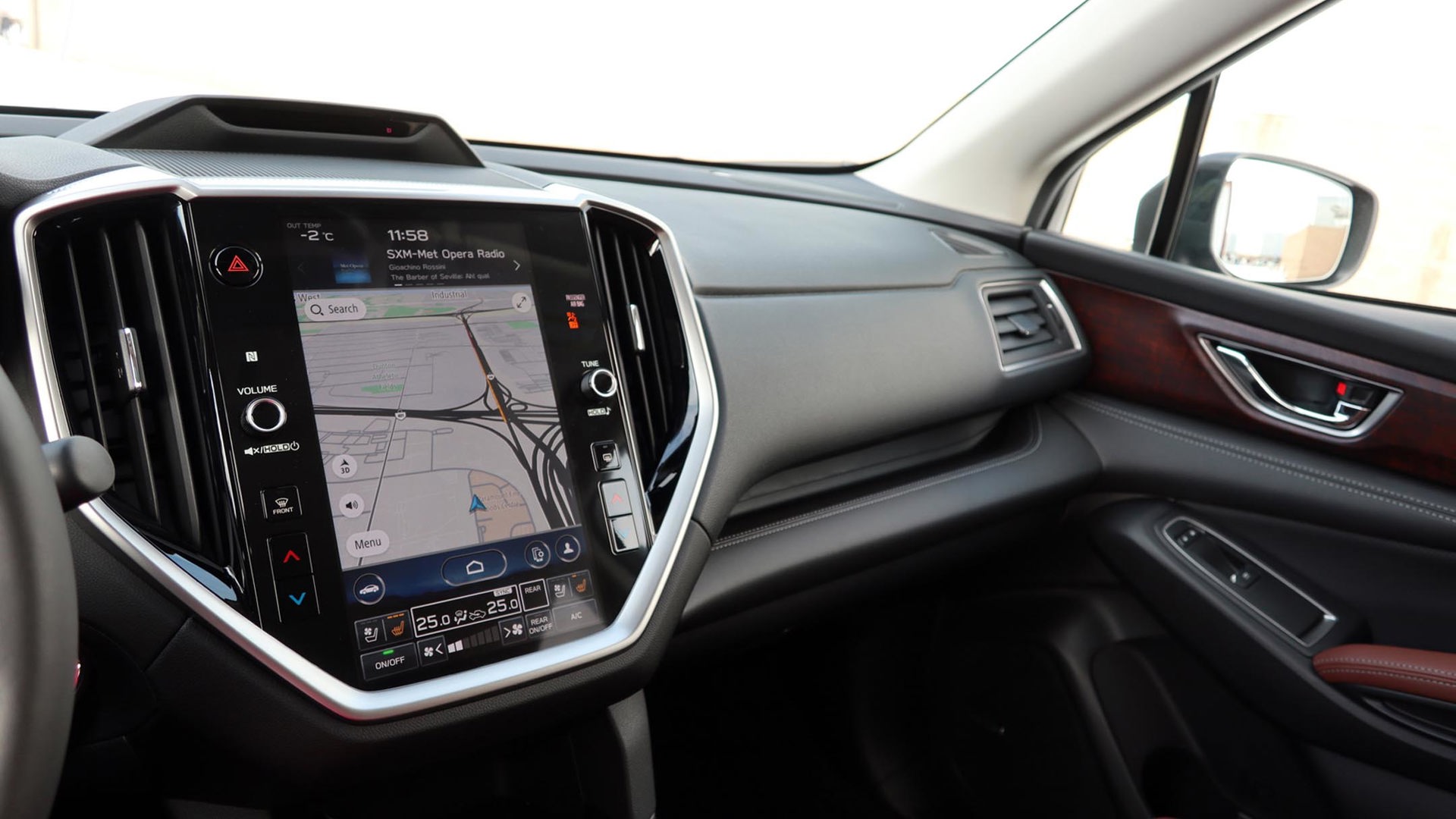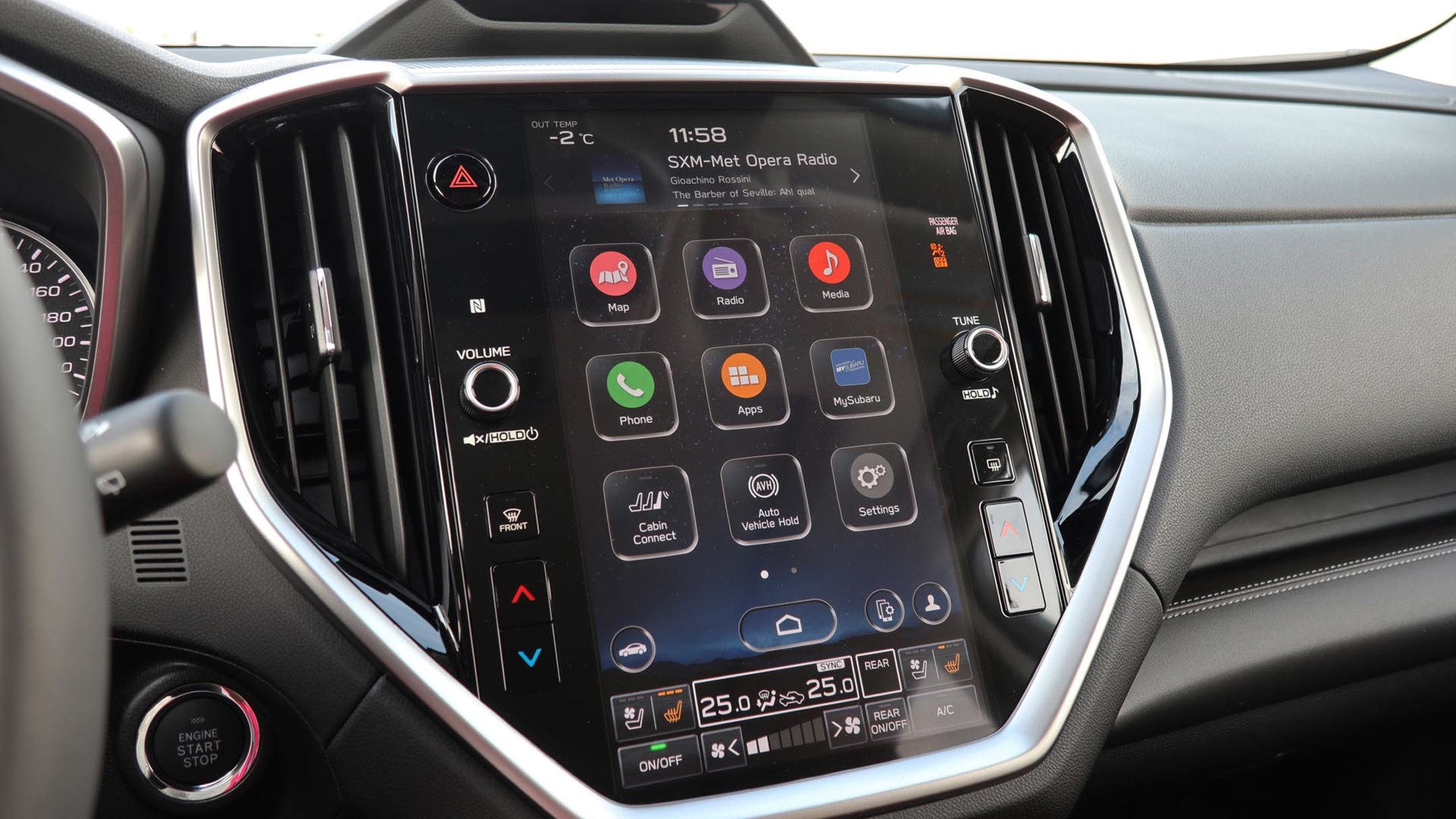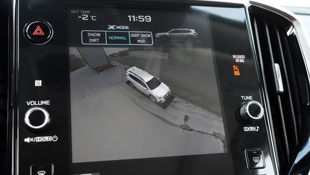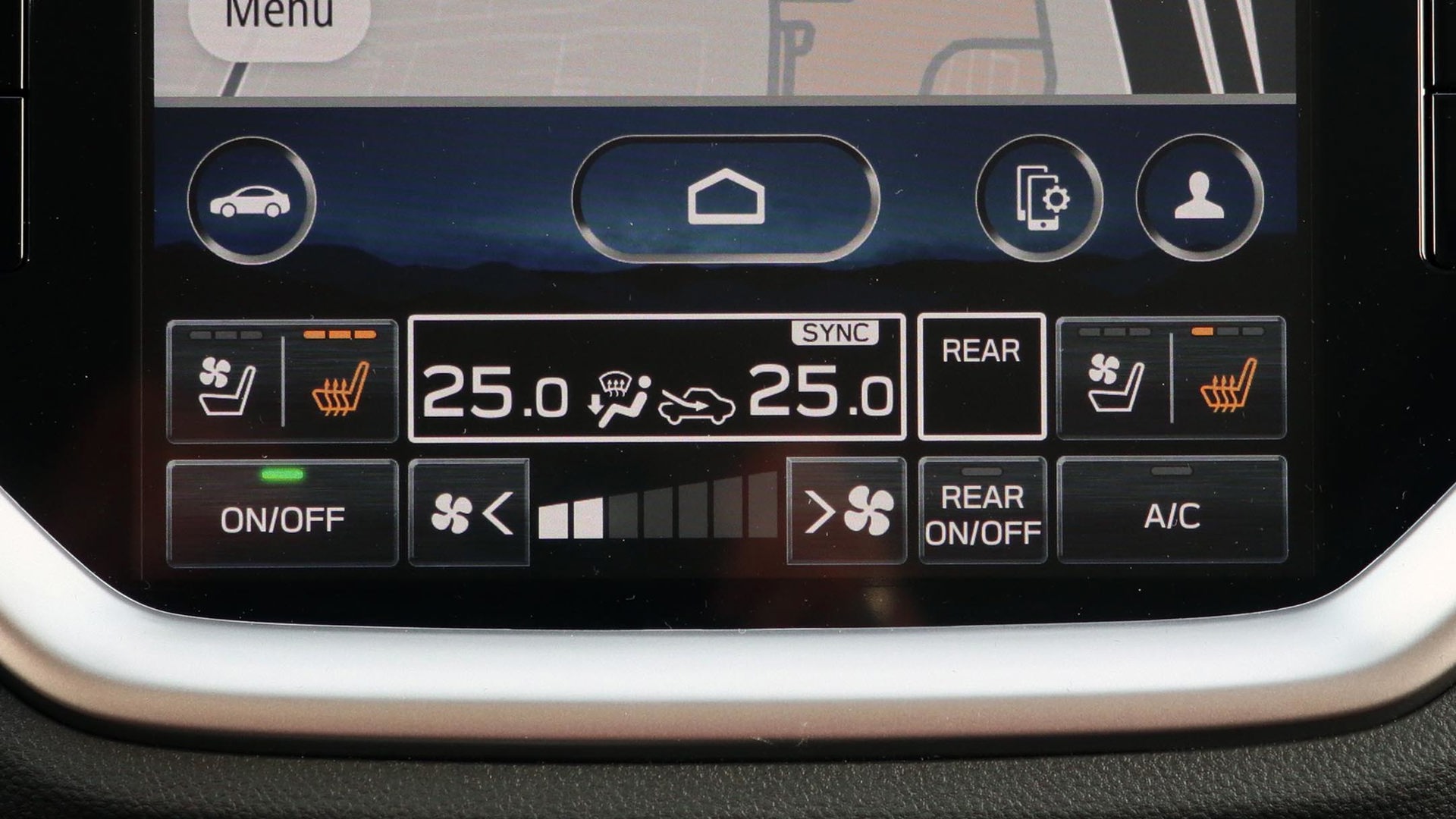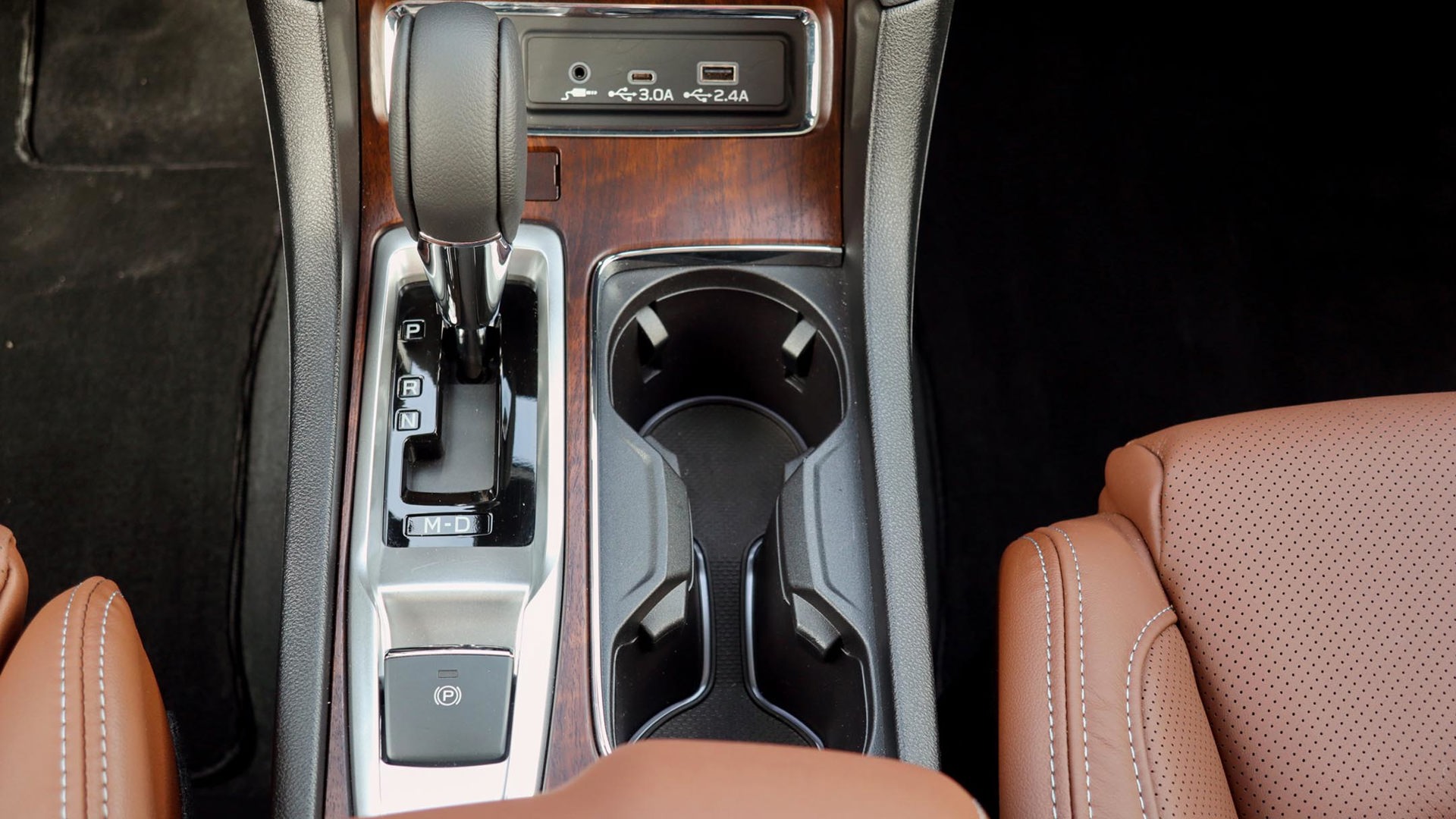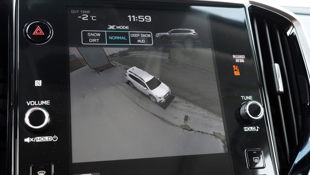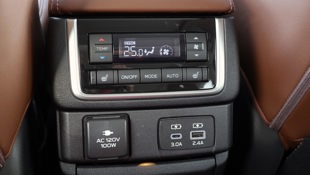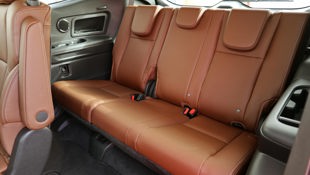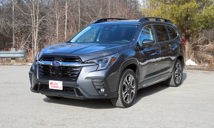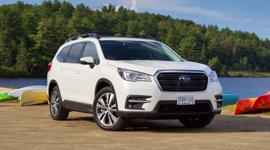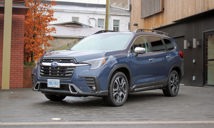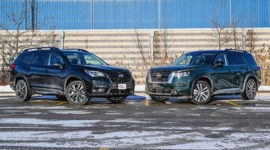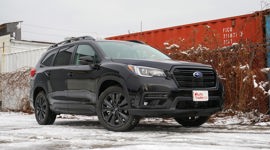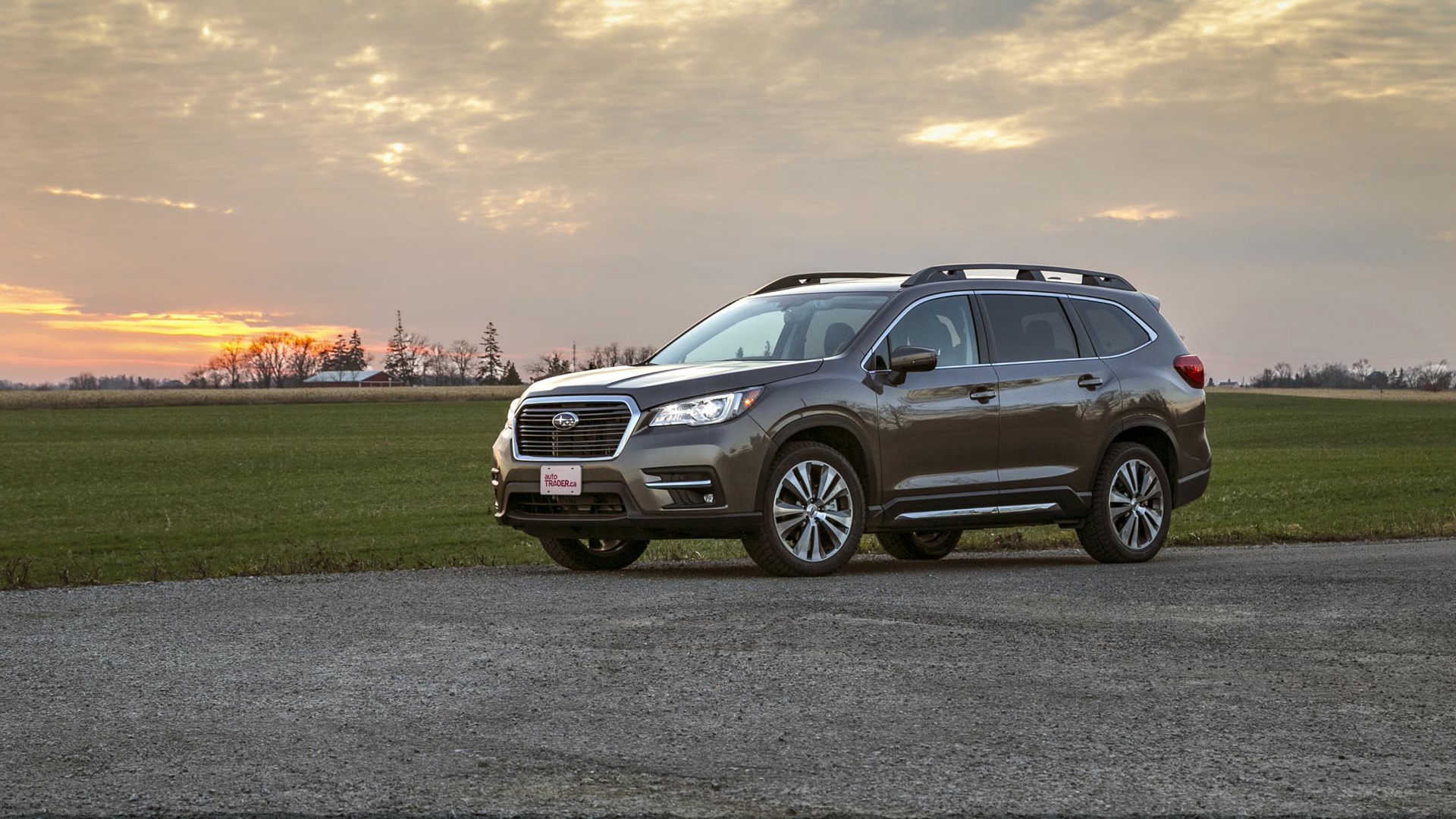 AutoTrader SCORE
AutoTrader SCORE
-
STYLING8/10
-
Safety9/10
-
PRACTICALITY8/10
-
USER-FRIENDLINESS6/10
-
FEATURES8/10
-
POWER8/10
-
COMFORT8/10
-
DRIVING FEEL8/10
-
FUEL ECONOMY8/10
-
VALUE9/10
The 2023 Subaru Ascent, the automaker’s largest vehicle, receives some updates including new front and rear styling, more features, and improved driver-assist technologies.
The Ascent comes with seven- or eight-passenger seating, and starts at $42,990 including a non-negotiable delivery fee of $1,995. This tester was at the other end of the scale in top-level Premier trim, which is $55,990 before taxes.
Styling: 8/10
For 2023, the Ascent receives redesigned tail- and headlights, a new grille, and air ducts in the front bumper that improve aerodynamic airflow. It gives it a more standout quality without looking overly rugged. The Convenience and Touring trims have 18-inch wheels, while the Onyx, Limited, and Premier have 20-inch rims.
Inside, the cabin is now focused around an enormous 11.6-inch centre screen, standard in all trims, that replaces the 6.5- or eight-inch units that the Ascent had previously.
Safety: 9.5/10
In crash testing, the Ascent gets the top five-star rating from the United States National Highway Traffic Safety Administration (NHTSA). It also earns the highest Top Safety Pick+ from the Insurance Institute for Highway Safety (IIHS). That non-profit organization has updated its side-impact crash test to better simulate being struck by a larger SUV, and passing it is now required for the top designation. More than half of vehicles that qualified in 2022 no longer do for 2023, but the Ascent aced the new test.
For 2023, Subaru’s camera-based EyeSight driver-assist system is updated with a new additional wide-angle camera that better identifies pedestrians and cyclists at intersections. It also gets updated software, and a new electric brake booster improves brake response.
EyeSight includes adaptive cruise control, lane-keep assist, lane-centring, emergency front braking, and automatic emergency steering. The system is behind the windshield where its view is kept clear by the wipers, whereas many vehicles can shut off these assists if the front-mounted sensors get blocked with snow or dirt. The only issue holding it back from a perfect score is that while blind-spot monitoring with rear cross-traffic alert and emergency rear braking is standard on almost all trims, it can’t be added to the base Convenience.
Features: 8/10
All trims include such items as a power driver’s seat, three-level heated front seats, roof rails, and automatic three-zone climate control. Moving up the trim ladder adds a power tailgate, rear climate controls, auto-dimming mirror, heated second-row seats, leather upholstery, and premium audio system. My Premier tester further included a surround-view camera, power-folding mirrors, ventilated front seats, and fake wood trim.
The new 11.6-inch centre screen, standard in all trims, has wireless Apple CarPlay and Android Auto. It includes navigation in the Limited and Premier trims, along with a What3words function. This clever app divides the world into three-metre chunks and assigns three words to each. If you’re in the middle of nowhere, tap What3words on the Ascent’s screen. It will locate you and display the words, such as “swept.closet.scared.” Send those to someone looking for your campsite, and their phone will lead them to you – so have the marshmallows ready at the campfire.
User-Friendliness: 6/10
The Ascent is a mixed bag for usability. It’s easy to get into the first- and second rows, and while third rows usually require some degree of flexibility, it’s tougher here because the step-plate on the door sill is set high. Smaller children and older adults may need some assistance getting in. Those third-row seats fold down easily enough, but they’re stiff and heavy to pull back up. They snap into place completely upright, so you then have to pull another strap to adjust them back to a comfortable position.
The new 11.6-inch centre screen retains some hard buttons for stereo volume and tuning, along with toggle switches for the temperature, but other functions are handled by tapping the glass. This can sometimes take extra steps, such as the fan speed, which requires tapping to open the menu and then tapping to get to the actual control. The screen debuted in other models and Subaru, and after listening to complaints, the brand made the seat heaters one-step instead of two; however, it needs to do the same for some other functions also. As with many oversized screens, the Ascent’s can wash out and the functions impossible to see if the sun hits it.
Practicality: 8/10
The Ascent has 458 L of cargo space behind the third-row seats. That’s small against its competitors, but the opening is wide and the liftover is relatively low, so it’s easy to pack items in. Small-item space is good in all three rows, including spacious bins and cup holders for those in the very rear. The dash has a small cubby along the passenger side that’s perfect for stashing gloves, and the door pockets are spacious. Towing capacity is a maximum of 2,270 kg (5,000 lb).
Comfort: 8/10
The Premier comes strictly with second-row captain’s chairs for seven-passenger seating, and that top trim includes Nappa leather, heated first- and second-row seats, and ventilated front seats. Second-row passengers have their own set of controls for temperature, fan speed, vent mode, or automatic mode.
Front- and second-row head- and legroom are about mid-pack with rivals. Third-row legroom is, too, but headroom back there is tighter than in models such as the Kia Telluride or Volkswagen Atlas. The Ascent’s seats are firm but they provide good support on longer drives.
Power: 8/10
The Ascent is powered by a turbocharged, horizontally opposed 2.4L four-cylinder engine that makes 260 hp and 277 lb-ft of torque, mated to an automatic continuously-variable transmission (CVT). It has enough power for most commuting, although it can get noisy and labour when the vehicle is loaded up and asked for highway passing power. Some competitors offer V6 engines or hybrid systems, but the Subaru sticks with the smaller engine.
Driving Feel: 8/10
The Ascent’s steering is very light and I’d prefer a bit more weight to it; and its engine can be jerky when taking off from a stop. But it has a tight turning circle that makes it easy to manoeuvre and park in tight spaces.
All-wheel drive is standard on all trims. Subaru calls it “symmetrical,” which doesn’t refer to the torque distribution but to the layout of the engine, transmission, and rear differential. Under normal conditions it sends 60 per cent of power to the front wheels. As with competitors’ systems, it can transfer more to the rear as needed for traction; but since the rear wheels always have at least 40 per cent of torque – many rivals don’t power them until it’s necessary – it can feel more confident on curves. All trims include X-Mode selectable driving modes, while the Limited and Premier add dual-function X-Mode with additional settings for mud or deep snow.
Fuel Economy: 8/10
The Ascent is rated by Natural Resources Canada (NRCan) at 12.3 L/100 km in the city, 9.4 on the highway, and 11.0 in combined driving. In my bitter-cold-and-snowy week with it, I averaged 13.6 L/100 km. It takes regular-grade gasoline.
That isn’t as fuel-sippy as some of its competitors that do better with larger engines, but the difference can be minimal. Against the Ascent’s 11.0 L/100 km combined rating, the Nissan Pathfinder gets 10.5; the Kia Telluride is 11.5; and the Volkswagen Atlas rates 10.9 with its turbocharged four-cylinder and 11.9 with its V6.
Value: 9/10
The Ascent starts in Convenience trim at $42,990 and passes through the Touring, Onyx, and Limited grades to my Premier at $55,990. In comparison with similarly sized three-rows, the Hyundai Palisade ranges from $49,974 to $58,774; its Kia Telluride sibling from $52,095 to $64,695; the Volkswagen Atlas from $44,445 to $60,945; and the Ford Explorer from $50,535 to $69,515 (all including destination).
The Touring, second up from base, is $47,490 with seven- or eight-passenger seating and will be a good choice for many. It includes a power tailgate, auto-dimming mirrors, blind-spot monitoring, and a panoramic sunroof, and with 18-inch wheels that are less expensive to fit with new tires than the 20-inch wheels on upper trims.
The Verdict
The 2023 Subaru Ascent has a few flaws, but it has a lot going for it with its price, practicality, safety features, and ratings, and its new styling and upgraded features. Many of its competitors are top-notch, but the Ascent’s value proposition makes it a must-see when you’re shopping in the segment.
| Engine Displacement | 2.4L |
|---|---|
| Engine Cylinders | H4 |
| Peak Horsepower | 260 hp @ 5,600 rpm |
| Peak Torque | 277 lb-ft @ 2,000 rpm |
| Fuel Economy | 12.3 / 9.4 / 11.0 L/100 km cty/hwy/cmb |
| Cargo Space | 458 / 1,231 / 2,140 L behind 3rd/2nd/1st row |
| Model Tested | 2023 Subaru Ascent Premier |
| Base Price | $53,995 |
| A/C Tax | $100 |
| Destination Fee | $1,995 |
| Price as Tested | $56,090 |
|
Optional Equipment
None
|
|
